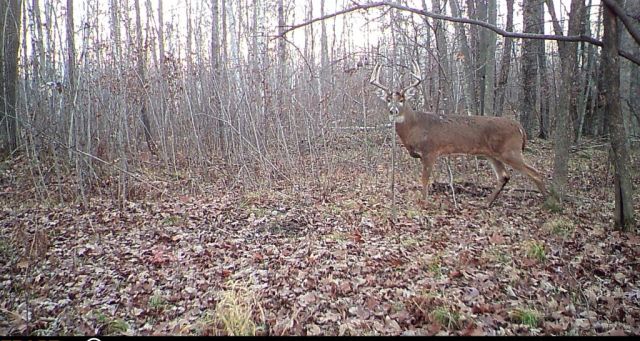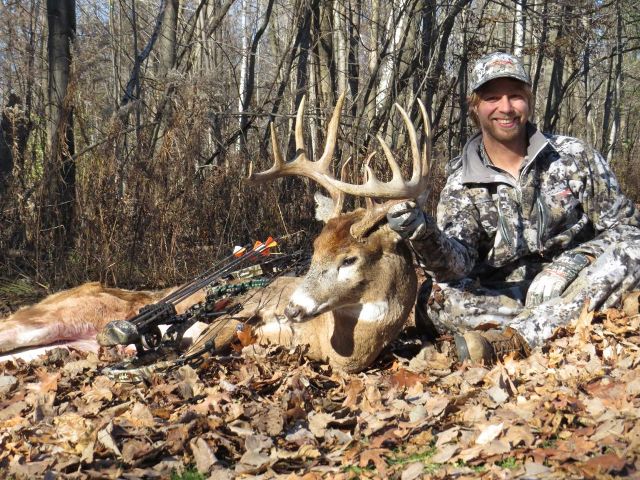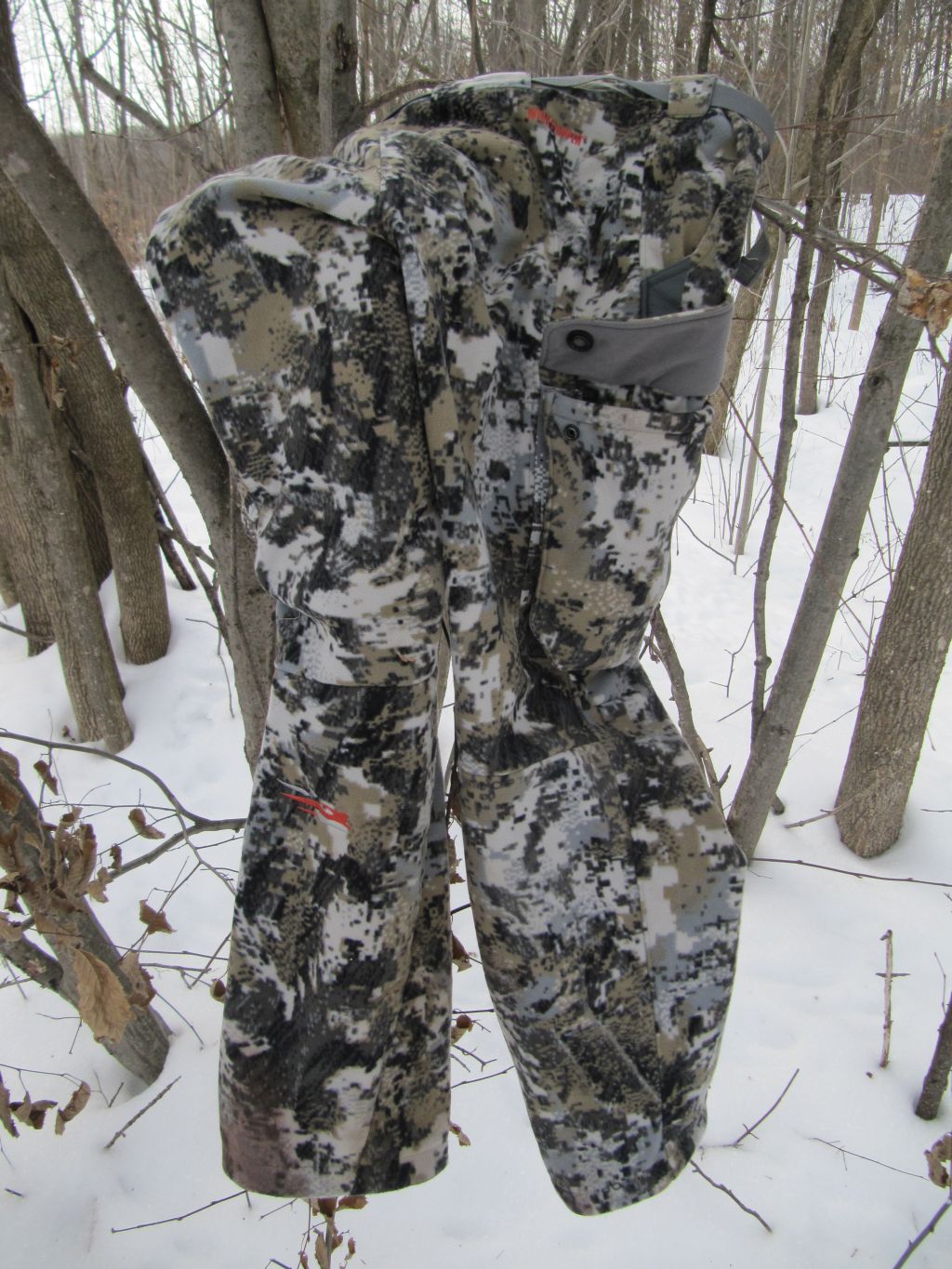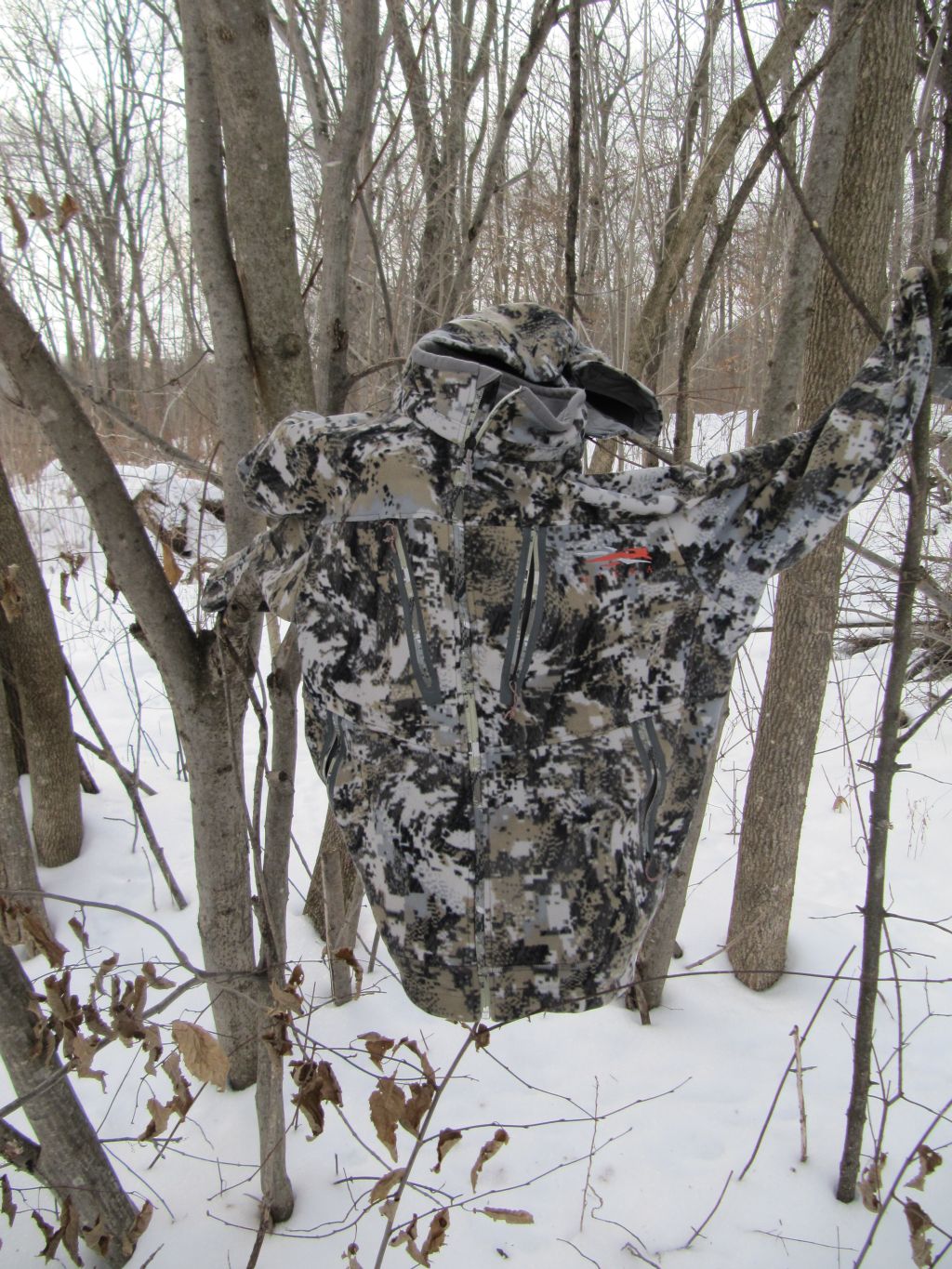
Big Whitetails, Rokslide Style
By Les Welch, Rokslide Prostaff
So you don’t have your own food-plot packed honey-hole on a massive chunk of private land? Don’t stress—with a little hard work and some ingenuity, you can consistently wrap your tag around mature public land whitetails. Even if you do it right, it’s likely you won’t have dozens of unpressured deer coming into the agriculture areas hours before sunset, but they still have to eat, drink, and live their lives. Rest assured with the right work and preparation, you can routinely tag those big bucks.
Now don’t expect it to be anything like the spectacular bluff country private land found in Buffalo County, Wisconsin or the beautiful draws and creek bottoms of Iowa, but know it can be done. You aren’t going to have the luxury of a big box blind. There won’t be any food plots to hone in on. Most likely you won’t have the ease of traveling to and from via your ATV. That’s just due to the fact that some public land is off limit to ATV’s, and also because those mature whitetail bucks usually will not tolerate the intrusion.
Early season bucks can be readily patterned and I have hunted them many times then. Nowadays, from mid-September to early October I travel from my home state of Wisconsin to somewhere west of the Mississippi River hunting Elk, Mule deer, and Antelope, so I don’t hunt the early Whitetail season.
Upon returning home, the whitetail season has been open for a few weeks and those big public land bucks have heard the sounds, smelled the odors, and saw a lot of those public land hunters. These are the bucks who’ve played the game and won in previous years. Their late summer repeatable patterns have been interrupted and these aging bucks have reverted back to the solitary, hidden, thick, dark, wet, overlooked, and hard-to-reach spots. Hard to reach doesn’t always mean farthest from the road. It may mean accessing a waterway. It could be finding smaller less obvious overlooked areas. It might be thinking outside of the box and getting to and from a given area differently then everyone else is.
There are a few things that need to be kept in mind. First and foremost always keep the wind in mind while scouting, setting stands, hunting, placing and checking cameras, and entering and leaving. Other than a few select days around the rut, you will never fool a mature buck’s nose. Even those few days around the rut, you won’t fool it but there is a high probability that within 30 minutes his brain will be on to something else and he will have forgotten about the previous encounter.
Other hunters will have the biggest impact on your hunt. You are going to have to work harder, work smarter, work longer, and think differently than they do. You will need to learn how to deal with the influx of ATV’s, game cameras, and bait piles. There will be the sounds of clanging metal from the tree stands and foreign odors. It might be like a logging operation as guys are limbing, and pruning as they clear shooting lanes. All of these things are working against you and bringing down the chances you have at seeing, much less harvesting, a mature whitetail buck.
Are you ready to throw in the towel after those last few paragraphs? Why even try you ask? Well I’m going to give you a few ideas that I have fit to work in my hunting style. There are a number of hunters who figured it out and seem to get it done every year on public land. Mobility, scouting, hard work/dedication, and trial and error are a few things that they have in common.
Thinking Strong
In my opinion one of the biggest reasons that you will be or won’t be successful is your approach. When Michael Jordan put up the shot at the buzzer (I know, which time right?) to win the game, he knew that shot was going in. Did it always go in? No it didn’t. However he had confidence that he was doing the best that he could at that given moment. That is the approach I take on every trip to the field. I’m considering wind direction, am or pm hunt, food and water sources, bedding areas, travel areas, deer phase, other hunters and predators, game camera pictures, past years’ experiences, and deer sign. From there I mold what approach I’m going to take on that given hunt.
When I was able to hunt early season I would always focus on food, water, and the travel in between. The bucks are still in bachelor groups and they are fairly repeatable when it comes to early and late movement.
On morning hunts I would set up on the water that was closest to their bedding area as I felt I could safely get into and out of undetected. In one area this meant putting on hip boots and walking down an old stream bed. It had only a few inches of flowing water. In the area I selected to hunt, the stream made a bend and over years had washed out a good sized hole which was always filled with water. The bucks would hit this spot almost daily before bedding up. It was a tricky one to sit with the wind, but when everything was right it was one of the best sets I’ve ever had.
Evening hunts I strictly focused on food or even more precisely the travel routes between the bedding and feeding areas. I never had any luck right on the food sources during early season in the big woods. Big bucks don’t show up in shooting light close to the food source so it was always the routes between or those staging areas just before the food sources.
My favorite time to hunt whitetails is the last week of October through November, depending on the state. Particularly in Wisconsin the 25th of October through November 5th are the dates for me.
During the first part of this time frame, the bucks are on the move. They are making scrapes, rubs, and looking for those very first does. They are still repeatable, following those past year’s rut lines. This is when they start making those first daylight appearances. They have been on the cameras the prior weeks, but usually always in the dark.
Here is where I step away from the way most guys hunt. Most guys have up a few stands, or have a few locations where they routinely hang their stands. I’m ALWAYS, ALWAYS, ALWAYS on fresh sign this time of year. If it’s not super fresh, then it has to be a perennial scrape in an area that I know holds the type of buck I am looking for. If I don’t have a shooter buck on camera, I will only be hunting big sign. Yes I know I will miss some big bucks that aren’t leaving big rubs or lots of scrapes, but I know if I have big sign that there is a mature buck around. Big bucks can leave little sign, but little bucks won’t leave big sign. For me it’s the same way with elk and turkey hunting. I’m always looking for the active, aggressive, vocal animals. Yes I’ll bypass some in order to get to those that are in the frame of mind that I am looking for.
During those late days of October, I’ll sit all day or move sometime throughout the day to a different location, but either way, I’m out from daylight to dark. At this time the bucks are on their feet searching and ready, but for the most part the does aren’t receptive. This is the best time to get them while they are still using their “core” areas.
Once the first few days of November tick by it becomes a crap shoot as to where they will be—everything becomes a lot less predictable. Calling during this time frame is an absolute. I’ll stress here again that those bucks are on the search and there aren’t many does that are available. The best way to get their attention is with calling and decoys. A simple grunt in the woods might carry 35-100 yards maximum on a deer that is moving. Rattling can get the attention of an animal up to a few hundred yards, and having a decoy can be enough to seal the deal if they do hang up, or it can actually illicit an aggressive response.
Standard gear for me includes three different grunt calls, a can call, real rattling antlers, and my Heads Up Decoy. I will never have a hunt where I don’t use all of those options during the said time frame. My calling sequences last about 60-90 seconds and I repeat every 10-15 minutes depending on the situation and terrain. These bucks are up and moving, and a buck on the move can cover an amazing amount of ground in a few minutes, thus the reason for calling so often.
If I rattle at 4:00 pm and a buck is coming towards me 500 yards away he can’t hear me. In 3-4 minutes he can cover that distance and pass by out of my sight 100 yards away. In another 3-4 minutes he could be 500-600 yards away and not hear me again. By calling more often I increase the chances that deer aren’t getting by me without hearing me. No, not every deer is going to respond to my calling, but at least I’m putting it out there and giving myself the chance to hit the ones that are going to be in the mood that I am looking for. This is my favorite, and the most exciting phase to hunt.
Once those first few days of November are gone, I’ll refocus my set-ups to those areas where the does bed and there is a good possibility that bucks are right with those does and/or going to and from when leaving and searching for new does. In this time frame it’s very hard to get a buck to leave those hot does. There’s no reason to. All I am doing at that point is counting on one of the does to tow a good buck past me. This can be a very frustrating phase to hunt.
Once that “lock down” phase lightens up I’ll go back to those earlier scrape and rub lines looking for the bucks to come back and start searching for those last does to come in to heat. This can be a little more exciting than the previous phase, but less than the searching phase.

My 2015 public-land whitetail I tagged in Wisconsin using the tactics described in the article
Our temperatures here in Wisconsin vary greatly during this time period so I use the Sitka layering system in the OPTIFADE Elevated II pattern. Obviously the more time you spend in the woods hunting the better your odds of success. Sitka has engineered their systems’ to maximize our ability to stay warm, remain quiet, and be functional.
My go-to system this year was Sitka’s Merino base layers and the Stratus Jacket, Pants, and Beanie. Sometimes I would add another Core mid-weight layer on top and/or bottom. I finished it off with the Fanatic gloves and a facemask.
The Stratus Jacket in OPTIFADE Elevated II Pattern
My After-Season Thoughts:
I was really looking forward to the new Stratus system for this year and it didn’t let down! The jacket and pants absolutely blew me away. Lightweight at less than two pounds, completely waterproof, and unbelievable quietness make this the best pant available for Midwest ruttin’ whitetails! The micro-fleece shell lined, with Gore Windstopper make this the perfect combination to help us grind out those long hours on the stand. The jacket has all the attributes of the pants and it’s cut for layering underneath so I could easily add the right combinations to take me all the way through November with this system.

The Stratus Pant
The jacket also has many well placed pockets to keep our gadgets handy and readily available. The safety harness port is integrated in so there is no excuse to not buckle up and stay safe. On those windy days, wrap the hood in around your neck to cut off the wind.
Again Sitka has unveiled a top-shelf system that can’t be beat for fit, function, and durability. This system will accommodate a wide range of temperatures and conditions by simply adding or removing base layers like the Merino Wool, Core, or Traverse. I run this system all the way through our rifle and muzzleloader seasons just by layering underneath and adding the Stratus Vest on the top. Add in the Stratus hat, a facemask, and pair of Mountain Gloves and you will be set for the season.
Sitka Gear also offers their System Builder here. This handy tool can help you build or customize your own system from build, next-to-skin, insulation, outer layer, waterproof layer, through necessities
As hunters we strive to outwit our quarry. We need to pick our gear to maximize our time, effort, and efficiency while in the field. Every little bit helps level the playing field of hunting an animal that always has home-field advantage. The fit, function, and detail that Sitka puts into these systems allows us to operate at our highest level of performance for the greatest time.
You can ask Les questions or discuss this article here



















